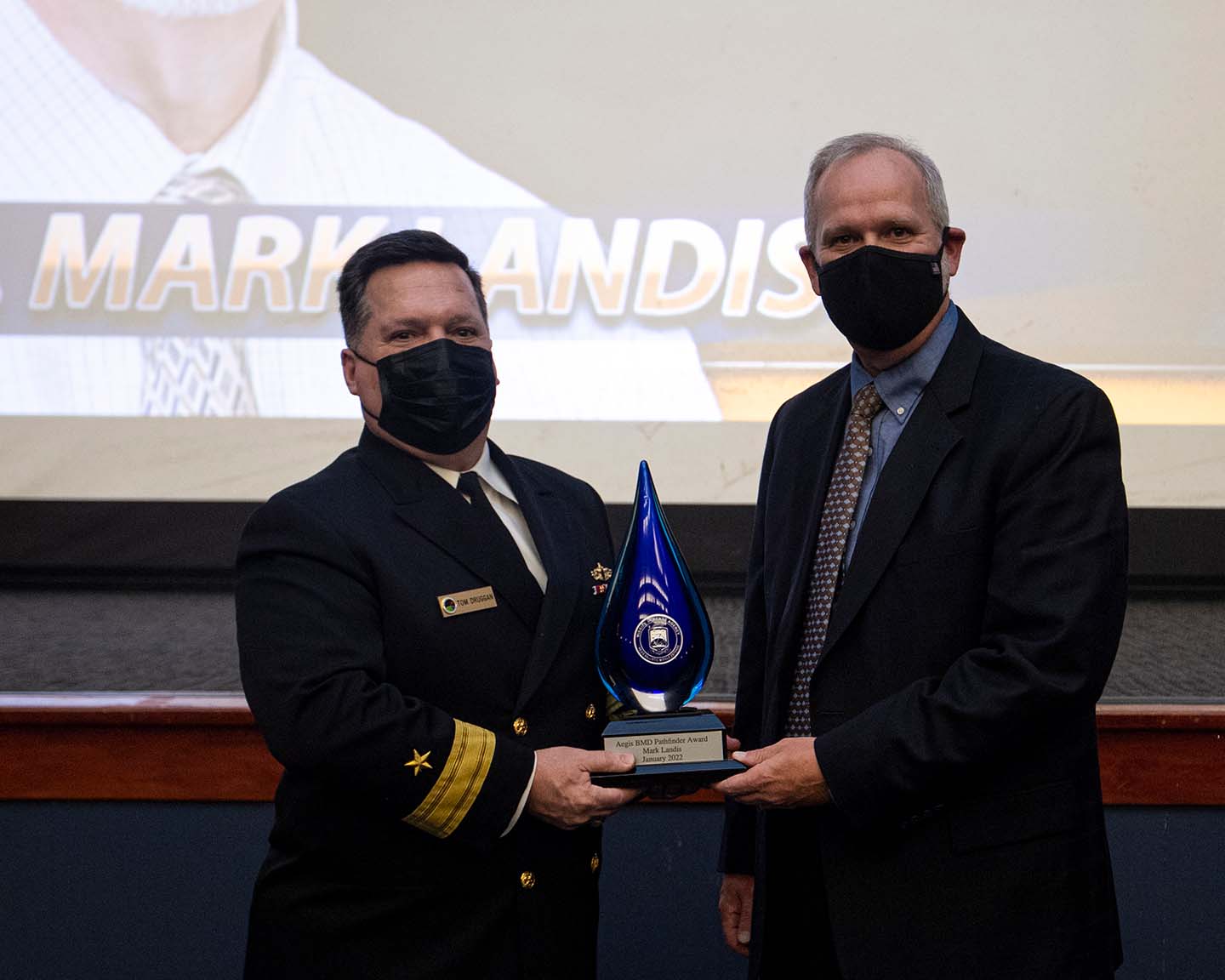Press Release
Landis Recognized as an Aegis Ballistic Missile Defense Pathfinder
In recognition of his significant contributions to the nation’s missile defense capabilities, Johns Hopkins Applied Physics Laboratory (APL) engineer Mark Landis has been honored with the prestigious Aegis Ballistic Missile Defense Pathfinder award.
The annual award honors individuals who have demonstrated outstanding leadership, extraordinary technical excellence and innovation on naval ballistic missile defense programs. Landis, who serves as the technical director for the Ground-Based Midcourse Defense Technical Direction Agent activity, is the fifth APL staff member to receive this recognition in the 16 years of its tradition.
“It is an honor to receive this award,” Landis said. “It’s great that people associated with the Aegis program look at those who played a significant part and my name comes up out of thousands of people who have worked on the program.”
In his current role, Landis provides technical expertise and analysis in support of the technical development of the Next Generation Interceptor, which provides enhanced homeland defense capability. A member of the Laboratory for the last 32 years, Landis provides technical advice and recommendations to the program director and technical director. He also oversees technical contributions to ensure quality products are delivered to inform critical decisions.
Landis has worked on various aspects of the Aegis Ballistic Missile Defense (BMD) program for almost 30 years, starting with the Terrier Lightweight Exo Atmospheric Projectile (LEAP) demonstration program. He led the development of the Terrier LEAP 6-degrees-of-freedom simulation, a “high” fidelity model of the Terrier LEAP missile used for predicting performance of the system (in particular for the planned flight tests). Shortly thereafter, he was a critical contributor to the definition of the Aegis LEAP Intercept (ALI) program, which included the Standard Missile-3 (SM-3).
In 2003, Landis became APL’s SM-3 chief engineer and continued to work closely with industry to transition the ALI system into an operational capability, which became Aegis BMD. In 2007, he took over managing APL’s Theater Missile Systems Engineering Group, where he led much of the SM-3 technical work within the Laboratory. In early 2008, Landis was part of the team that engineered, within weeks, a solution that allowed a modified Aegis BMD system to intercept a disabled satellite in Operation Burnt Frost.
During his tenure, Landis has served as the technical advisor to the Aegis BMD program office and as APL’s Aegis BMD chief engineer.
“This recognition is important because APL was involved in the creation of Aegis back in the 1970s and the Aegis BMD mission starting in the 1990s,” Landis said, emphasizing the work of the entire APL team to the program. “I was lucky enough to work on it for 30-some years. To have five APL awardees is a big percentage and lends credence to the contributions APL has made to the Aegis program, especially Aegis BMD. It is pretty significant given that January 25th is the 20th anniversary of the first successful Aegis BMD missile intercept flight test.”
Landis received the award on Jan. 10 at Fort Belvoir, Virginia.
